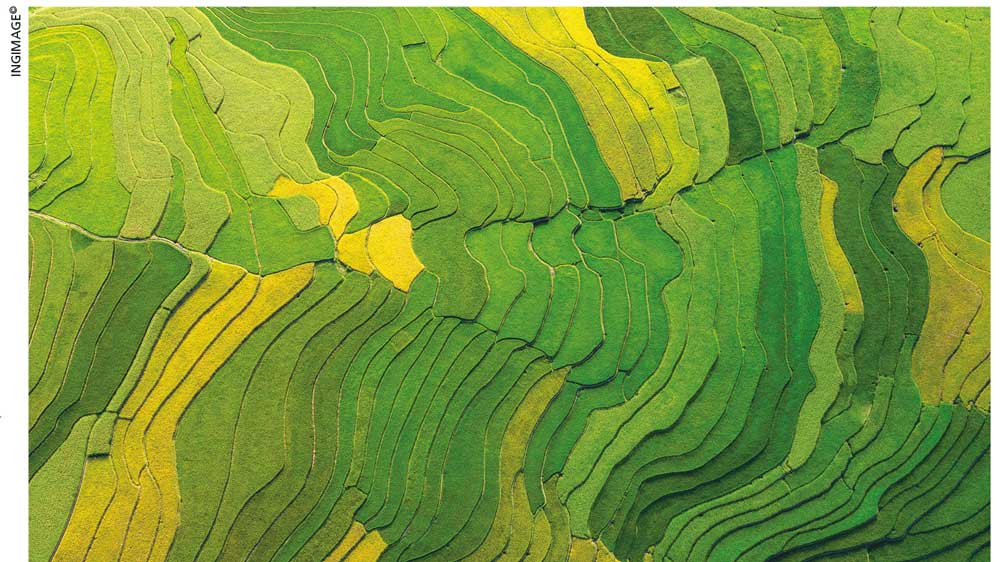FOOD SECURITY
PRESERVE CROP DIVERSITY!
Akila Wijerathna stresses that this practice is critical to achieving food security

A substantial and alarming decline of 75 percent in genetic diversity among agricultural crops is posing a severe threat to global food systems and essential ecosystem services. This decline, which has occurred over two decades, involves a drastic decline of genetic variation and underscores the critical importance of conserving traditional crops.
These crops embody centuries of human and natural selection, and provide the genetic diversity that’s necessary for crop improvement. Genetic variation, shaped by processes such as mutation and natural hybridisation, is vital for plants to adapt to changing environments.
As the world faces a looming climate crisis and escalating environmental degradation, preserving crop diversity has become a global priority.
Ensuring conservation and accessibility of these crops to researchers, plant breeders and farmers is now a critical mission. This will help address the challenges of feeding a growing global population while maintaining an eco-logical balance.
The conservation of traditional crops is a global concern due to the urgent need to protect plant diversity. Initiatives such as the Global Strategy for Plant Conservation (GSPC) aim to rejuvenate plant diversity for poverty eradication and sustainable development.
This strategy promotes both in situ and off-site conservation methods to preserve seed crops. While these methods share the goal of conserving crop diversity, they differ in their ability to sustain both genetic wealth and the role of farmers in preserving seeds.
The Crop Trust – an international nonprofit organisation established by the FAO, Bioversity International and CGIAR (formerly the Consultative Group on International Agricultural Research) – plays a central role in these efforts.
This nonprofit is dedicated to conserving crop diversity globally, ensuring its availability for future generations and underlining the organisation’s commitment to a sustainable system for conservation.
Preservation of traditional crops and their wild counterparts is of utmost importance for smallholder farming communities in developing nations. In these settings, diversity goes beyond being a matter of tradition; it is a lifeline for farmers who must contend with changing environmental conditions.
The wealth of plant species found in cultivated fields and the surrounding natural habitats represents a living reservoir of genetic potential that’s continuously adapting to shifting circumstances.
This inherent dynamism provides a valuable source of genes that are necessary for developing new crop varieties that can withstand emerging challenges.
Conservation of traditional seed crop diversity presents a unique opportunity to bridge the gap between the restoration of biodiversity and enhancement of agricultural productivity.
As articulated in the UN’s Sustainable Development Goals (SDGs), SDG 2 notes that preserving this diversity not only addresses the imperative of eradicating hunger but also ensures food security through the cultivation of resilient and diverse crop varieties.
These conservation methods can contribute significantly to the broader goal of restoring biodiversity (SDG 15) while empowering peasants and farmers (SDGs 1 and 2) to play an active role in sustainable agriculture.
By strengthening conservation management practices and facilitating farmers’ access to seeds, policy makers can not only safeguard local knowledge but also enhance community resilience and bolster agricultural productivity.
To operationalise this vision effectively, it is imperative to institute policies that guarantee the attribution of rights, and access to seeds for all stakeholders such as farmers, smallholders, peasants, breeders and local communities.
Balancing in situ and off-site conservation methods is pivotal, since the former sustains local knowledge and offers multifaceted benefits to the human-biodiversity relationship. The synergy between these approaches holds the promise of achieving sustainable biodiversity management and agricultural productivity.
Due to the complexity of these endeavours however, it is vital to invest in further research. Questions surrounding gene flow, natural hybridisation and introgression remain sources of uncertainty, and warrant comprehensive investigation.
Exploring the genetic evolution of traditional seeds in relation to resilience and adaptation to climate change is another pressing need.
Research has focussed on refining conservation methods, and encompassing aspects such as genetic diversity, seed viability and adaptation capacity is essential – especially for ensuring the continued relevance and resilience of traditional crops in the face of climate uncertainty.
In this multifaceted quest, the conservation of traditional crop diversity emerges not only as the vital bridge between biodiversity and agricultural productivity but also a linchpin in the pursuit of sustainable development.




